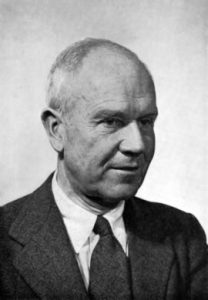In the grade nine curriculum, it is necessary to learn about revolutions. But of course, PLP students are special, so we do things a bit differently. We made machines.
The unit started off with an introduction into the time before revolutions. We learned about farmers and town life, touching on what we learned last year in our Change Creates Tension Unit. We talked about how the industrial revolution changed everyday life.
During that time, we were split into different groups. Each group had to study a different revolution, and later make their machine (which I will get to later) on. I was studying the Easter rising revolution with Tamara, Lauren and Kailey. I wanted to do this revolution because recently I was accepted into a trip to Europe with girl guides. We will be visiting Dublin, where the revolution took place, so I thought it would be a good idea to learn more about it.
The Easter rising was a revolution in 1916 in Ireland. The fighting only lasted 6 days, and the British won. But it set in motion a plan for Ireland to become independent.
Meanwhile in scimathics, we were learning about circuits. Each machine was required to have at least two hand-built circuits, so we learned how to make them before starting on the machines. I thought it was pretty cool. My dad was an electrician, so learning the basics of what he did was pretty cool.
To learn about our revolutions, we first had to learn about what a revolution was, and how it worked. We studied a theory that was created by Crane Brinton. He compared revolutions to a sickness, with several stages. If you want to learn more about Brinton and his theory, check out my blog post on it, How long really was the wait?.
While learning and doing all this, we were reading a book. The book is called Leviathan. It is about a young boy who gets thrown into a war. It is a really good read. Now, you might be thinking, ‘how does Leviathan fit in with revolutions?’. Well, I’ll tell you. It doesn’t. We read the book because of the genre, Steampunk. Steampunk is a combination of futuristic technologies based in the Victorian era, and powered by steam. Again, you’re probably thinking ‘what does steampunk have to do with revolutions?’. And again, nothing. We learned about steampunk for the aesthetic. We incorporated steampunk into our machines. I found this part of the project really cool. This is because I know some steampunk enthusiasts in Kaslo, where I am from, and it was neat to see what all the fuss was about! I have more information on steampunk in my post, Steampunk, and how….
Now’s when we get into the nitty gritty stuff, the building of the machine. See, the thing is, by this point, we were down to three group members. One of us was in Australia, and couldn’t do much from there. So we had to make our small number feel great. And we did. We were very on the ball, and came out ahead of most groups. It was a difficult process. At the beginning, we had big plans, but the number of them that actually worked out was small. Especially when it came to circuits. It took me three days to get this one thing working, and finally we had to change our entire idea for it. But we persevered, and came out with an amazing product.
For the math portion, we had to do blueprints. The one of our first idea
Looks nothing like our final one
And for our full sized sketch
We had to completely redo. This part was very trial and error, but turned out fantastic.
But the biggest part, was the video. This was where we would explain what each thing meant, and how it related to the events of the Easter rising. We worked really hard on it, doing voice overs, making music, and dragging the machine all over the school. It didn’t turn out the greatest. We got tons of critique, but really took it to heart and got working again.
The second and final draft turned out way better. We redid lots, but still used some from our original.
https://youtu.be/kgOkGXtjBFU
This project was really strong in the fundamentals of PLP. We had group work, trial and error, critique, hands on, and electronic based stuff. It was a fun project. I definitely couldn’t have done it without the help of my peers. Although there were some things I wish I had done differently to start with. For example, I should have figured out that one of the circuits would have to be on its own before I spent 3 days on it. I definitely could have procrastinated less on some of the assignments. I need to work on balancing my projects. Because while all of this was going on, we also had the PLP winter exhibition. I really think I learned a lot from this project, not just from the work, but also how to work in a group better.






